THE Gold Coast's upper north contains many of the region’s most historic locations.
The region’s oldest school is in Coomera, an area which is now the subject of a major building and residential development boom.
In recent decades the farms of the 19th and early 20th centuries have been replaced with new homes and even a theme park, Dreamworld.
Take a look back at some of the upper north’s most notable families, locations, landmarks and past.
THE Rocky Point Sugar Mill
![GCB PHOTO MUST CREDIT LOCAL STUDIES LIBRARY 7: Rocky Point Sugar Mill in the early 1930's during W. H. Heck's era [picture] / Photographer unknown.](https://content.api.news/v3/images/bin/4b8d73109b2e95bf09ffd491e321234b?width=650)
ROWS of sugarcane once filled fields of dreams in the city’s north.
The region’s sugar industry began during the 1860s, just a decade after the Gold Coast was first settled.
The Heck family, originally from Germany, came to the area and established the Rocky Point Sugar Mill that was built in 1879 at Woongoolba, now one of the city’s most northern suburbs.
It opened the same year and became the centre of an increasing community along Mill Road.
The family bought more than 4000ha of land known as Undullah Station in the early 1900s to raise cattle and bullocks.
This land became part of the area’s expansion, which included construction of a butcher shop, built in 1926 by the Heck family’s second generation in a bid to make the area less reliant on nearby townships.
The shop also did meat packing and became a thriving business, supplying the local townships.
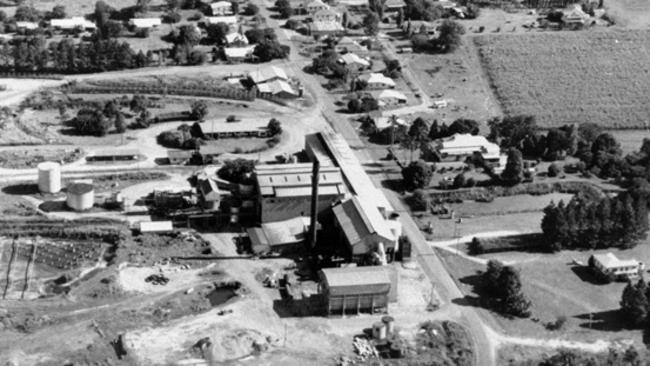
The bullocks would walk for two days from Undullah Station to the butchery, which was on School Road near a piggery.
It was known for producing smoked wurst, a popular German sausage, widely eaten by the German families that lived in the area.
Ede Haack (nee Heck) said in Lesley Jenkins’ book Now and Then: A Gold Coast Journey from the Past to the Present that she remembered the sausages’ spicy flavour.
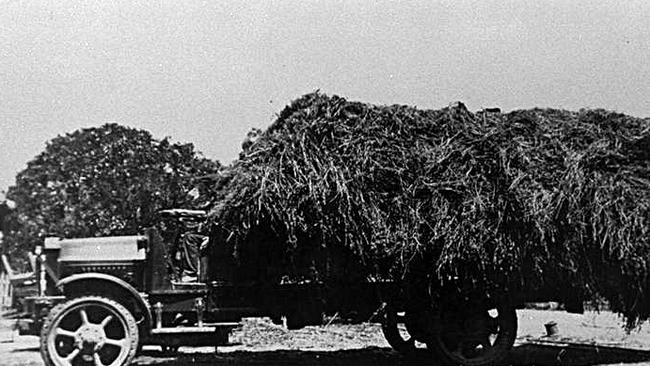
“On sausage days I went to the shop to tie up the ends of the filled sausages so they could be strung up on long poles in the smokehouse,’’ she said.
“I often tended the smoke fire to generate as much smoke as possible from sawdust to cure the sausages, which took nearly a week to mature before they were ready for sale.’’
The sugar mill continues to operate and has been used as a set for film and television productions.
Pimpama
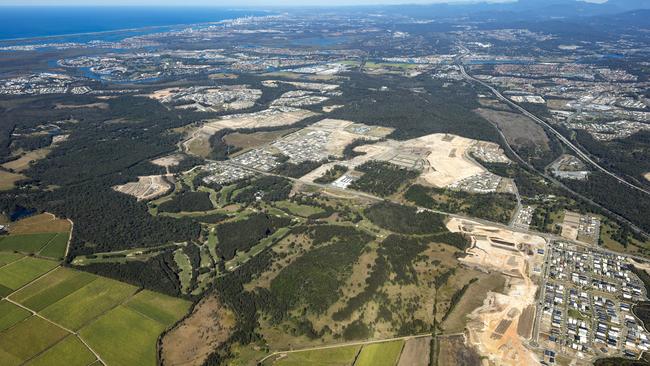
THERE’S a certain fickleness about why some towns thrive and others wither.
Australia is littered with townships that grew out of the gold rush, only to die when the rich veins petered out.
Others simply stand still as time and the major highways pass them by.
Pimpama township for many years was such a place, a victim of an upgraded Pacific Highway in the 1960s and, more recently, the M1.
But the town that promised so much in the 1870s might yet fulfil the potential its pioneers recognised when the old Cobb & Co coaches stopped at Hotham Creek on their way to Nerang and Benowa.
The bypass turned the town into a sleepy hollow but it still boasts some wonderful old Queenslander-style homes.
Pimpama is now feeding the tremendous growth on the Gold Coast-Brisbane corridor.
That growth is backburning towards Coomera and Pimpama as land becomes scarce and the demand fuels growth for homes and businesses within easy reach of Brisbane and the Gold Coast.
It was Pimpama’s position on Hotham Creek between Brisbane and Benowa in the 1870s that led to it being a natural staging point for the Cobb & Co coaches.
J.W. Drew’s Pimpama Hotel was a place to replenish the passengers while the horses no doubt had a sip or two of Hotham Creek water, fresh from the headwaters in the Darlington Ranges.
A trip that today takes an hour was once an all-day affair.
In its early years, Pimpama supported rice and sugar cane and later dairy and beef herds along with banana plantations.
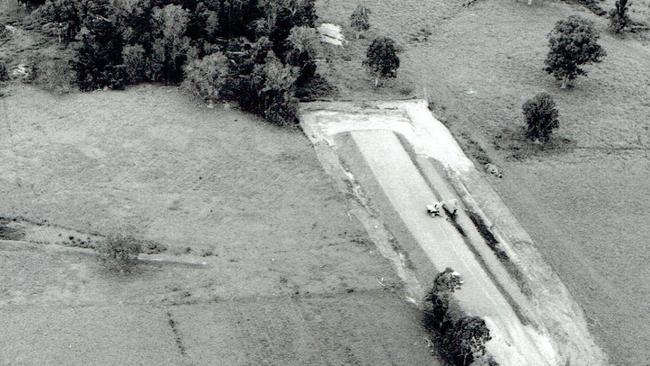
With a strong agricultural economy, the town thrived and there were pubs on either side of Hotham Creek.
The Pimpama State School opened in 1872 and later the School of Arts was built.
A Methodist Church popped up and the future looked rosy.
But as roads improved and the motor car replaced the horse and buggy, Pimpama’s place as a halfway stop became increasingly irrelevant.
Many people will remember driving through Pimpama and seeing the historic cemetery, the Pimpama and Ormeau War Memorial stature of a soldier and the church on the side of a hill.
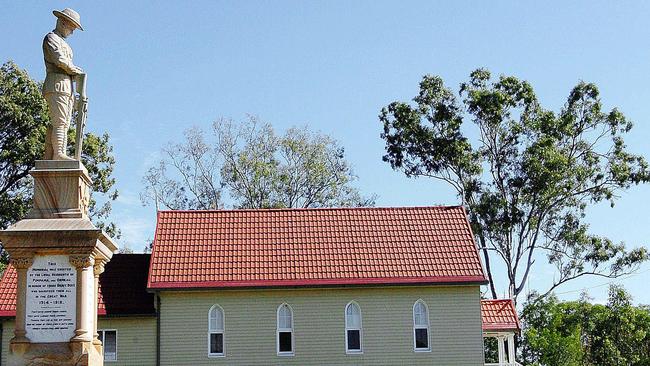
Even those icons are now hidden from view as the M1 passes well to the west, returning the area to a place of relative peace.
The small Pimpama township (take Exit 49) on Hotham Creek, grew from a cluster of houses, which sprang up around the local sawmill after World War II.
In recent years Pimpama, along with Coomera and Ormeau, have become the focus of the city’s residential development boom with a large number of housing estates being built.
The Hollindale Family
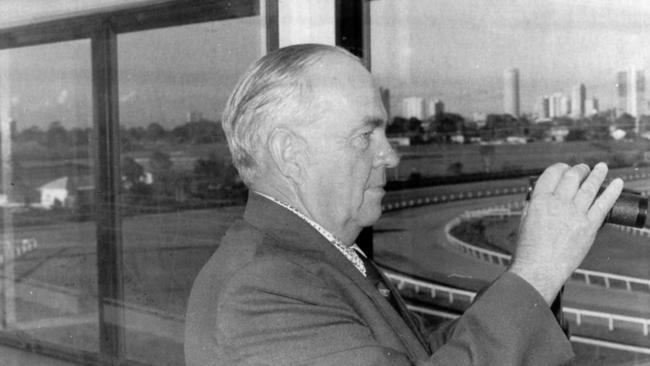
COOMERA’S Hollindale family has been a mainstay on the Gold Coast since the days of timber getters and dairy farms.
The family was led by John Hollindale, who emigrated from the UK to Australia with his mother, father and sister as a child in the 1840s.
He arrived on the Coast in the early 1870s to cut timber alongside Neddy Harper, who started the first European settlement at what is now Surfers Paradise.
John made his way south to the Tweed. His father and sister had died during the voyage friom England and his mother married a former convict.
Before going to work as a timber getter, he worked as a drover in northern NSW, later settling in Coomera where he met Mary Donald, his future wife and member of another of the Coast’s pioneering families.
They married in 1877 and settled on a property known as Rothiemay, which was named after the Donald family’s Scottish heritage.
The family eventually turned its interest towards the Coast’s dairy industry in the aftermath of World War II when John’s grandson, Alan, took control of the South Coast Co-operative Dairy, which was then based in Southport.
Lifelong resident Ian Hollindale has chronicled the family’s history and said the Coast’s dairy industry changed significantly during the 1950s.
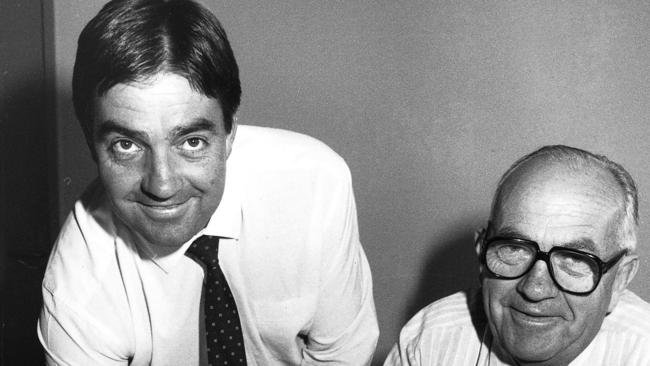
“It was one of the things which helped the Coast grow and develop,’’ he said in a 2009 interview.
“At its peak, the dairy would have been one of the city’s biggest employers outside of the council.’’
Alan later became a Gold Coast city councillor and was chairman of the Gold Coast Turf Club until his death in 1988.
More than eight generations of Hollindales have played in the Coomera Cricket Club in their time on the Gold Coast.
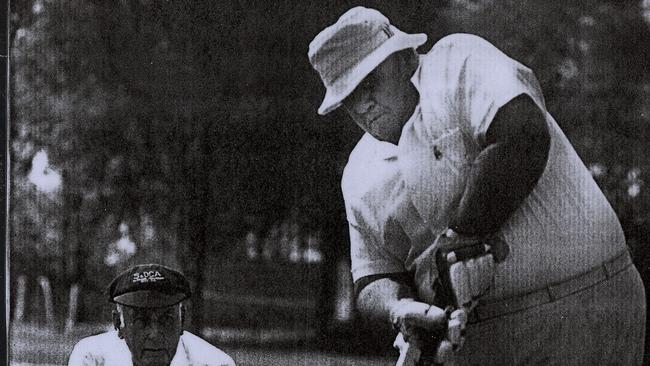
An area of parkland on the Main Beach foreshore was named after the family.
It received a multimillion-dollar upgrade in 2010.
The Rivermill
![GCB Historic Rivermill, Gold Coast Arrowroot growing at the Rivermill farm operated by the Walker family, Upper Coomera, Queensland, circa 1920s [picture] / Photographer unknown.](https://content.api.news/v3/images/bin/63ee44a9c21988b57a4c9719d6da6ce7?width=650)
THE early 20th century was an exciting time for the Gold Coast after its rail link opened, bringing new people and industries to the growing communities.
Stalwart employers, including dairy industries, continued to boom while the timber industry, which first brought people to the region, began to decline when construction of Australia’s first arrowroot mill began at Mt Nathan on what is now Nerang-Beaudesert Rd.
The herb, which is used in several products including tablets, biscuits and lollies, was one of the first crops cultivated in the region and the high demand required mills to process it.
The mill was completed in 1910 and was initially operated by Frederick Walker.
It was one of 27 mills built throughout the southeast region, including five on the Coomera River.
The industry boomed through the early 20th Century and was one of the major employers of its time, with the historic mill remaining in the hands of the Walker family throughout its operational life.
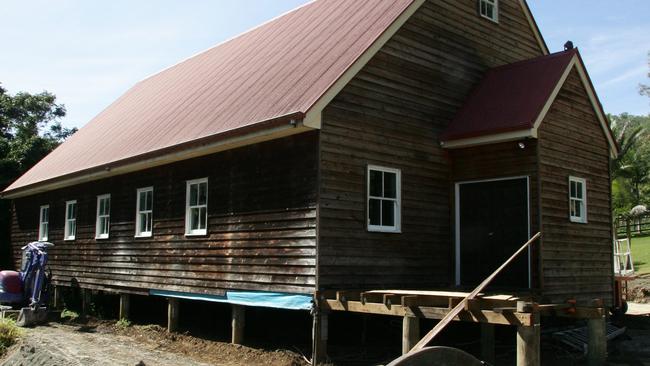
However all good things must come to an end and the industry fell into decline after the outbreak of World War II in September, 1939.
After struggling for several years, it closed in 1943.
Shortly after its closure, the mill was turned into a dance hall, cattle stud and dairy until it was abandoned in the mid-1940s.
Despite its historical significance, the former mill was left undisturbed until it was bought in 1946 and found a new life as a tourist attraction and historical monument.
It again reopened in 2008 and now operates as a museum of the early 20th Century.
Today, The Historic Rivermill is one of the Hinterland’s most popular attractions and last year celebrated its 105th birthday.
Dreamworld
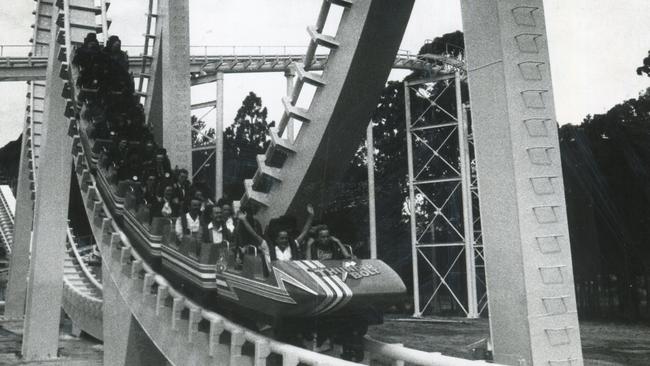
THEME parks are a big part of the Gold Coast’s tourism market but this wasn’t always the case.
The first local theme park was Nobby Beach’s famous Magic Mountain, which opened in 1962 as a chairlift and became a castle-themed attraction in the mid-1970s.
By 1974, dreams of building another theme park became a reality as local John Longhurst bought an 85ha parcel of land at Upper Coomera.
By 1976, much of the site had been excavated to make way for the park, which was designed by former Disney employees.
The park – Dreamworld – was opened by Premier Sir Joh Bjelke-Petersen in December 1981 after more than seven years of construction.
It’s early attractions included the IMAX Theatre, a Baldwin locomotive, Model T Fords, Rocky Hollow log ride, Australian koala theatre and the Captain Sturt paddle-wheeler.
Its first major attraction, the Thunderbolt rollercoaster, opened a year later and was eventually followed by the Gold Rush Country on the park’s fifth anniversary, in December 1986.
Among the major attractions of the nostalgia area was the Thunder River Rapids ride and the Eureka Mountain Mine which both proved hugely popular.
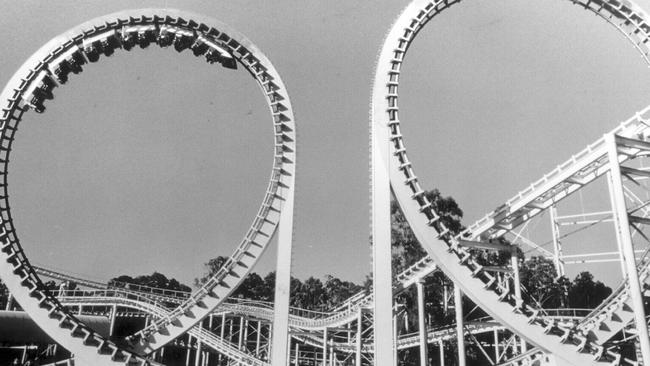
The same year it was visited by US astronauts Michael Coates and Paul Weitz to promote a screening of the space shuttle documentary The Dream is Alive, which was narrated by journalist Walter Cronkite and shown in the IMAX theatre.
Their visit came just eight months after the Challenger disaster and also included the display of a mock-up of the shuttle Columbia, which was also lost in a 2003 accident.
Magic Mountain closed its doors for the first time in 1987 and its famous chairlift was moved to Dreamworld the same year.
Mr Longhurst, now 84 years old, sold the park in 1989 to Dreamco and visited his creation for the final time a week later.
It was upgraded significantly during the 1990s when major attractions opened, including the Tower of Terror, Giant Drop and Wipeout.
In 1999 Dreamworld was again sold, this time to Macquarie Leisure Trust Group, now known as Ardent Leisure.
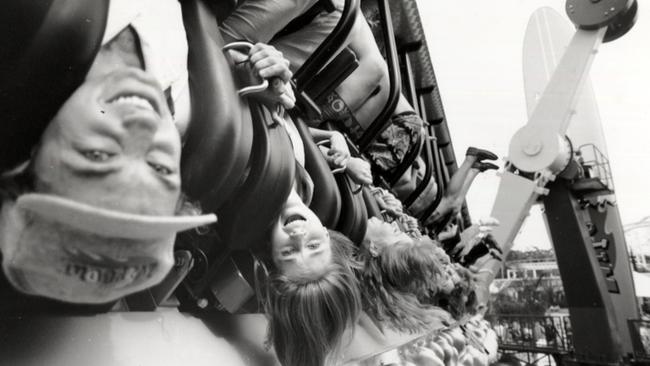
The park came to national attention again in 2001 when it was the home of reality television series Big Brother.
A purpose-built house was created to allow cameras to film the show’s cast.
At one point, more than 80 per cent of visitors to the park rode on the Thunderbolt but by 2003 numbers had fallen and it was in desperate need of maintenance, so park bosses decided to close it.
The ride was dismantled and its parts scrapped in 2004.
The station where passengers once boarded can still be seen at Dreamworld.
Famous passengers included Cliff Richard, Kim Wilde, John Farnham, Jean-Claude van Damme, Peter Andre and Wally Lewis.
In 2006 Dreamworld opened its new purpose-built waterpark, White Water World which proved to be a major success.
Big Brother wrapped up production in 2008 following several years of low ratings but returned in 2012 and ran until 2014.
The Big Brother house has since been dismantled.

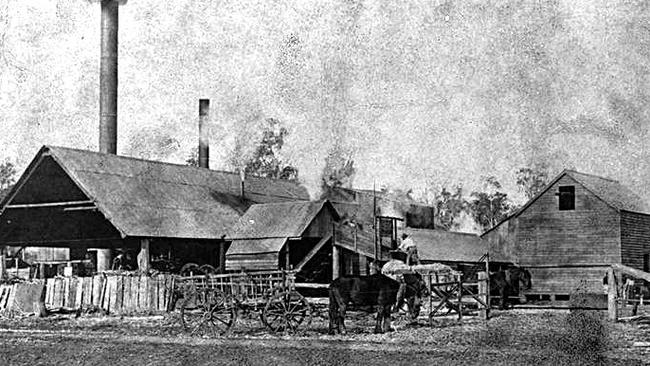
Add your comment to this story
To join the conversation, please log in. Don't have an account? Register
Join the conversation, you are commenting as Logout
‘Good luck with that’: Legendary developer’s stark warning
More than $5bn worth of developments are coming for the Gold Coast – but experts say it’s just a drop in the ocean of what’s needed. Read our special report on the city’s deepening housing crisis.
Why locking up damaged kids just won’t work
“Children are being placed back into abusive environments with no advocacy, ending up on the streets in sexploitation, criminal gangs, and juvenile justice systems because they do not have a voice,” writes Dr Cher McGillivray